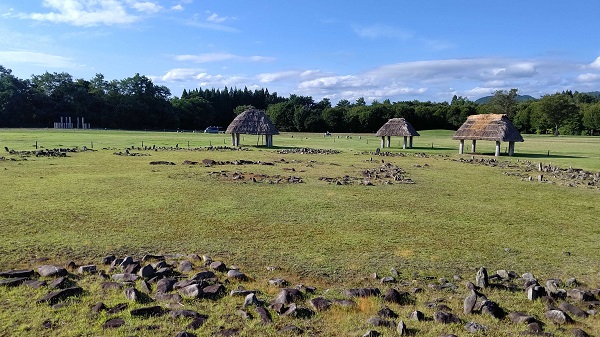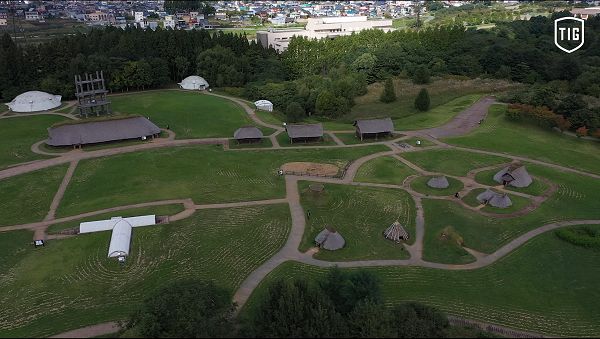- JAPANESE
- LANGUAGE
X
 THAT IS GOOD
THAT IS GOOD
UNESCO’s World Heritage Committee decided on July 27 2021 it will register “Jomon Prehistoric Sites in Northern Japan” (Hokkaido, Aomori, Iwate and Akita Prefectures), including the Sannai Maruyama Ruins in Aomori Prefecture, to the World Cultural Heritage list.
ZAIGOO Inc., the company that runs THAT IS GOOD, has been supporting the registration of “Jomon Prehistoric Sites in Northern Japan” as a World Heritage Site since 2010, and has also been involved in the establishment of jomonism, a non-profit organization headed by artist Taketo Kobayashi, who has written the article “Past and Future of Nippon Subculture” for this media.
So, this month, we’d like to introduce and summarize some of the articles in our Jomon Special! In addition to the articles that follow, we’ll be adding more and more content over the next month, so stay tuned!
●People fascinated by the Jomon 1 :Taketo Kobayashi
Post-Digital Artist, President of NPO jomonism
Past and Future of Nippon Subculture Jomon special ~JOMON・Art・Subculture~
Past and Future of Nippon Subculture Jomon special ~JOMON・Art・Subculture➁~
●People fascinated by the Jomon 2:Mai Fujita
Tile Art Artist, Member of jomonism
The Fun Jomon World
●People fascinated by the Jomon 3:Tomoko Kusakari
A unit for exploring the Jomon “nawa to yajiri” writer and Member of jomonism
Jomon Journey of nawa to yajiri
●People fascinated by the Jomon 3: Jin Katagiri
Jomon series vol.1
Jomon series vol.2
Jomon series Last volume


The Jomon we learned about in school was a rather barbaric and uncultured time when people lived by hunting in the fields and mountains, and then the Yayoi period brought rice cultivation and civilization, and we who live today are descendants of the Yayoi. However, according to modern archaeology, the Jomon and the Yayoi are considered to have gradually merged. In other words, we are modern people with Yayoi blood mixed in, but with deep Jomon roots.
First of all, the Jomon period, although there are various theories, is a classification of the lifestyle of the people who lived in the Japanese archipelago for a long period of more than 10,000 years, from around 13,000 years ago (some say up to 16,000 years ±100 years) to around 2,300 years ago.
With the end of the last ice age and like the Holocene glacial retreat known as Jomon-kaisin, global warming gradually progressed, and the sea became warmer and warmer, reaching further inland than it does today. As a result, people began to settle down, building settlements, picking berries, hunting, getting seafood from the sea, and creating the magnificent forms of clay figurines and pottery that express awe and reverence for nature.
In addition, even though there are traces of fights between one or two people, there are no traces of large groups of people fighting in the strata of the Jomon period. In other words, the people of the Jomon period lived in harmony with nature, respected nature, and created magnificent artifacts such as earthenware and clay figurines, while living a sustainable life without conflict.

jomonism started its activities in 2010. This was around the time when the “Jomon Prehistoric Sites in Northern Japan” were beginning to aim for World Heritage registration. At the same time, the collapse of Lehman Brothers was about to hit and it was an attempt to find values that would lead to breakthroughs for a new era at a time when modern, rational culture was about to fall apart.
On the NPO jomonism website, there is a description of the Jomon period as follows.
For more than 10,000 years between the end of the last ice age and the beginning of full-scale rice farming, the people who settled in the Japanese archipelago hunted and gathered, creating various tools, customs, and values that lead to today’s frontier era.
People lived in villages, hunted and gathered for their daily needs, prayed to nature for its blessings, and held frequent festivals and rituals throughout the four seasons. They also made tools out of clay and other natural materials, carved beautiful patterns, and traded through sea and land routes in a cultural way of life.
No traces of serious conflicts have been found in the remains of Jomon period dwellings, indicating that there was a culture that preferred peace and mutual aid while devoting itself to manufacturing.
Today, 2,300 years after the end of the Jomon period, we have an abundance of things and information, but if you feel that something is missing, the answer may be to find it in the values of the Jomon period. There are hints in the roots of Jomon that will help us to welcome another 10,000 years of happiness.
In other words, in the roots of us Japanese, there was a period of 10,000 years of conflict-free, creative, and sustainable life with our own unique worldview and cosmology. So, in order to live happily for another 10,000 years, let’s learn from the Jomon and reevaluate the “Jomon” values within each of us! That’s what this project is all about.
jomonism has held a number of events, including the “Jomon x JOMON” exhibition at the current Art in Gallery in Harajuku in 2010, the “JOMO-T” exhibition at the Laforet Museum in Harajuku the same year, and the “Feel The Roots” art festival at the Sannai Maruyama Ruins in Aomori Prefecture in 2011. Since then, under the leadership of current president Takehito Kobayashi, we have held “ARTs OF JOMON” around the world to discover and curate the Jomon in contemporary artists, as well as workshops.
The reason why we took the approach of a music festival and art form is that, just as Taro Okamoto of “Art is an Explosion!” recognized the roots of Japanese beauty in Jomon pottery, the expressions found in the forms of earthenware and clay figurines are so outstanding, and also because, to tell the truth, archaeology is a world of many theories and strict factions so we wanted to be free of those theories and instead ” spread the beauty of the Jomon! That’s also why we felt so strongly about it.
In reality, our bodies and minds, which are slowly fused with those of the Jomon and Yayoi, contain an aesthetic sense derived from the Jomon, Japanese art and subcultures, as they are called “interesting! “It’s unique! in the eyes of the world, may still have such essence hidden in them…That’s what I’ve been thinking about.
One last thing I would like to add is that although the World Heritage sites inscribed on the World Heritage List are in Hokkaido and the northern Tohoku region, meaning three prefectures in one province, there are also many wonderful ruins in Tokyo, Yamanashi, Nagano and Niigata. In fact, there are Jomon ruins all over Japan.
(In general, holy places have always been sacred, refreshing, and inexplicably pleasant places, and these places have become sacred places for Yayoi in later years, and shrines and temples have been built, leading to the present.)
After covid-19 is over, I hope that everyone from all over the world will come to Japan to enjoy the Jomon ruins and other wonderful remains, and feel the essence of how to live happily for the next 10,000 years. Such was the announcement of the decision to register the site as a World Cultural Heritage site on July 26.
THAT IS GOOD editorial department, Nakamura